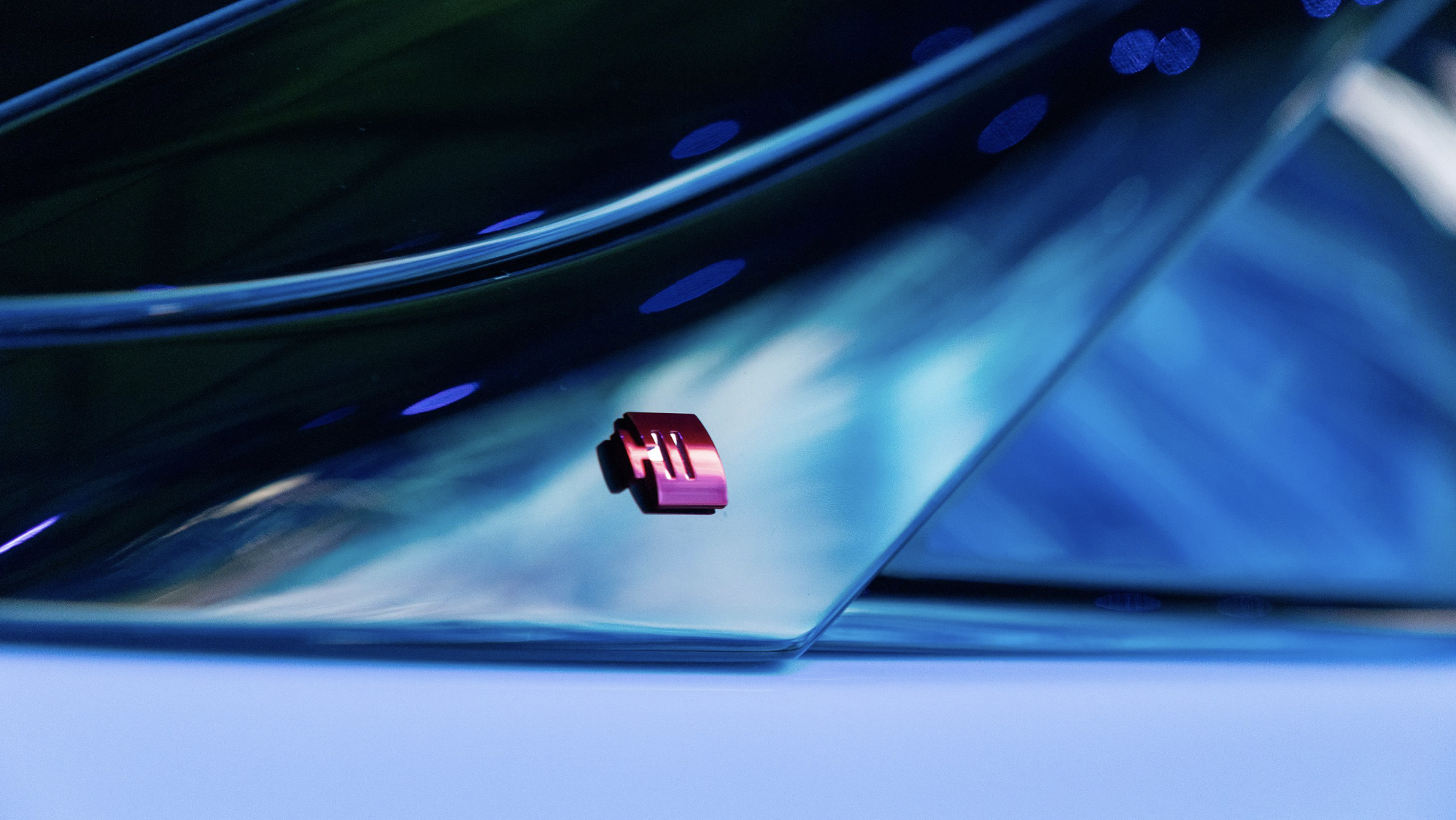To buy a computer, it should have an Intel CPU and run on Windows system; to use a graphics card, it must be by NVIDIA; to purchase an Android phone, it must be equipped with the latest Qualcomm chip.
If you understand the obsession of consumers with electronic consumer goods, then you will definitely understand the ambition of Huawei not to build cars. Computer manufacturers can have Dell, Asus, Lenovo, HP, but no matter what logo a computer has, there will always be an “Intel Inside” logo in the most prominent place.
Top IC and IP suppliers can penetrate OEMs and directly receive consumer praise. The user stickiness brought by this praise surpasses any brand. Huawei’s promotion of the “Huawei Inside” logo is an attempt to replicate this dominance in the automotive field. They aim to achieve a true “software-defined car” by occupying the high ground of software and also hold control over the design and release of intelligent hardware.
Huawei HI integrates all smart automobile-related businesses within the Huawei system, which currently includes five major product lines: smart driving, intelligent cockpit, intelligent vehicle cloud service, smart electric, and intelligent network connection. With a team of about 5,000 people, the company plans to invest up to 1 billion USD in research and development this year, with an annual increase of 30% thereafter.
Such a large scale of talent and funding directly raises the competition threshold of smart automobiles. The giants who had been waiting with their wallets in hand should re-evaluate whether they are suitable to enter the market.
Huawei HI is also undoubtedly the most challenging “second venture” in Huawei’s development history in terms of testing cross-organizational collaboration capabilities. Although they unified their solutions for smart cars, the 5,000-strong team comes from different business lines and even different business groups. For example, the HarmonyOS team belongs to the Consumer BG, and the electric motor team comes from the Huawei Digital Energy Production line. HI fully leverages the advantages of Huawei’s matrix organizational structure, almost integrating all possibilities of ICT technology accumulation extending to the automotive field, building a hardware platform that can be continuously upgraded along with demands and software development capabilities that maintain rapid iteration and optimization.Before the Shanghai Auto Show this year, Huawei also held its HI new product launch event, unveiling its latest generation 4D imaging radar sensor, MDC810 next-generation autonomous driving computing platform, and a complete set of intelligent cabin solutions featuring vehicle-mounted HarmonyOS, AR-HUD, vehicle-mounted intelligent screens, and content ecosystems. On the software level, Huawei HI also showcased for the first time the autonomous driving cloud service capability of the “Huawei Octopus,” high-precision maps, and the vehicle heating management system integrated with Huawei TMS.
Completing the 4D Millimeter-wave Radar Sensor Product Line
As the demands for perception continue to rise in autonomous driving, the camera has been upgraded from the original 2 million pixels to an 8 million-pixel high-definition camera, with solid-state lidar gradually being installed. Inevitably, the millimeter-wave radar has also been upgraded to a high-resolution 4D imaging millimeter-wave radar.
Huawei’s 288-channel large array imaging radar has expanded the resolution of the vertical direction, with the overall resolution four times higher than that of a common millimeter-wave radar and the angular accuracy twice as high. The higher resolution translates into higher density of 4D point cloud information of the surrounding environment, detecting more contours of single obstacles, and detecting smaller objects. For example, this millimeter-wave radar can obtain more reliable information about stationary obstacles such as protective barriers and roadside edges and detect cones 110 meters away, providing more abundant and highly reliable information for autonomous driving systems to make more informed decisions. The higher angular accuracy also means higher-quality radar signals, with detectable distance information, location information, and velocity information closer to the physical world.
In addition, the 4D millimeter-wave radar has increased the resolution of the vertical direction, enabling spatial relationships between objects of different heights in the same azimuth, solving the issue of identifying stationary cars under gantry frames.
Looking at these capabilities, we can only understand the significance of the 4D millimeter-wave radar relative to the millimeter-wave radar, but not compared to the lidar. As the previous paragraph demonstrates, lidar can achieve the same capabilities with crushing resolution superiority. Furthermore, the cost advantage of 4D millimeter-wave radar is not obvious, and in order to achieve higher resolution, the size of 4D millimeter-wave radar had to be enlarged making it less convenient to integrate than the millimeter-wave radar.
Previously, Huawei ADS Chief Architect Su Qinjing expressed concern about 4D millimeter-wave radar, stating that the cost of solid-state lidar will continue to drop, while the situation of 4D millimeter-wave radar will be awkward, and integration into existing perception systems is extremely difficult due to its massive size.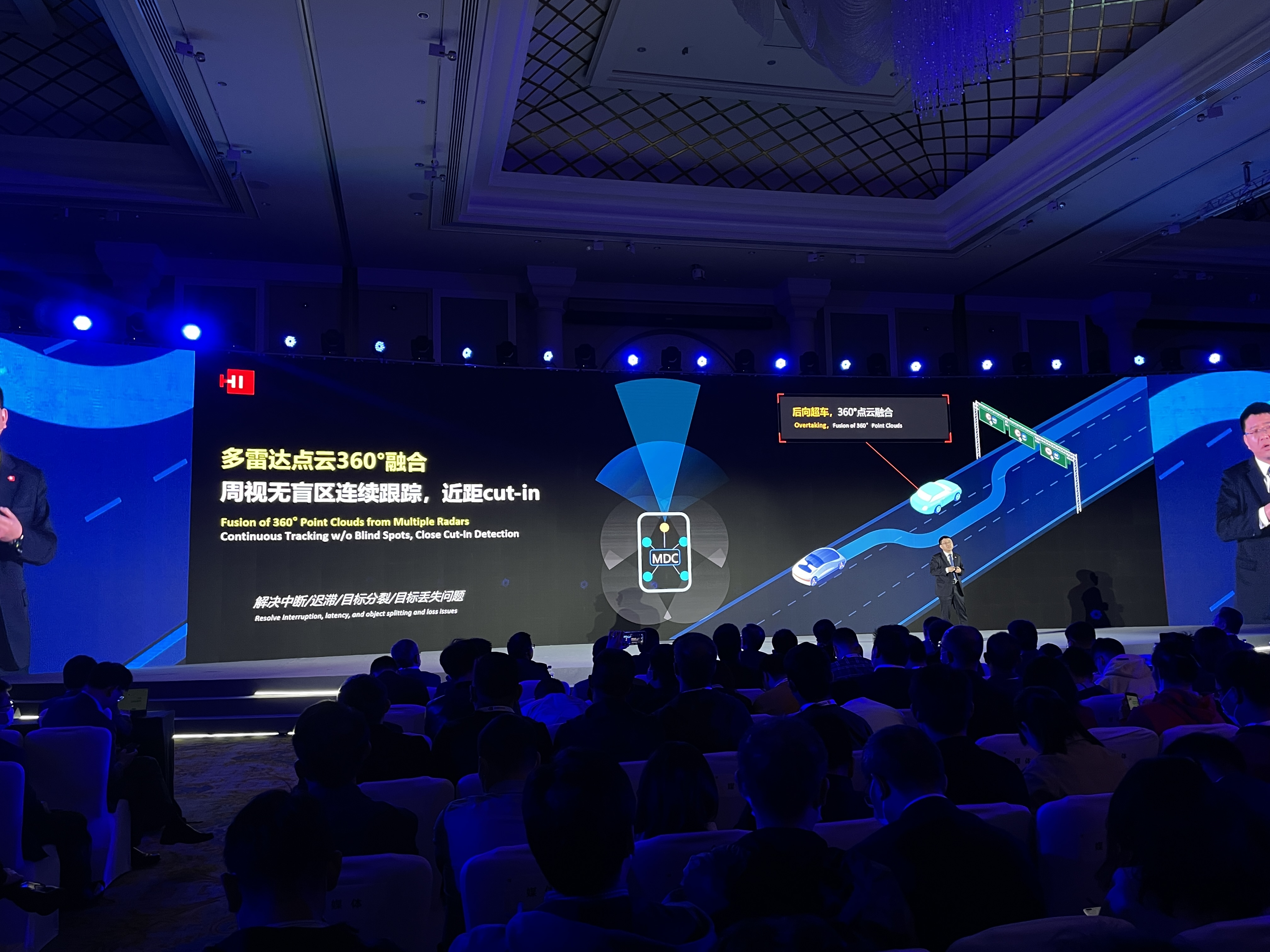
However, this does not mean that the 4D millimeter-wave radar has no value. Compared with lidar, millimeter-wave radar has a longer wavelength and stronger diffraction ability, which makes it much more stable in harsh environments such as rain and snow. It also has the ability to detect obstructed objects, which is not possessed by lidar. For example, Huawei’s 4D millimeter-wave radar can detect the moving information of vehicles blocked by the front car, which cannot be detected by vision or lidar. This can solve some of the problems in special scenarios of autonomous driving planning, such as the need for the front vehicle to quickly change lanes to avoid obstacles. Without detecting the stationary obstacle obstructed by the front car and making no advance planning, the autonomous vehicle will not have reaction time until the front vehicle moves.
To enable autonomous vehicles to achieve a higher level of safety and autonomous driving, it is necessary to integrate the signals of the 4D millimeter-wave radar to amplify the advantages of millimeter-wave radar.
400+ TOPS computing power for L2+ and assisted driving
The MDC 810 computing power has reached 400+ TOPS, capable of processing 16 video signals, 12 CAN signals, and 8 Ethernet transmission signals simultaneously. It can meet the demands of high concurrency, high computing power, and multi-sensor signal fusion calculation for autonomous driving. As a matter of fact, this computing platform has been installed on the first car with a HI badge, the ARCFOXhu Alpha S Huawei HI version, and has undergone vehicle-level verification a long time ago, ready to be produced in large quantities.
On the ARCFOXhu Alpha S Huawei HI version, the MDC 810 computing platform needs to simultaneously process signals from 3 lidars, 9 ADS cameras, 4 panoramic cameras (the ADS autonomous driving function will also call for panoramic camera information to complete close-range environmental information), 6 millimeter-wave radars, high-precision maps, RTK high-precision positioning, and inertial navigation. It is clear that the MDC 810 computing platform is arranged in a well-structured manner.
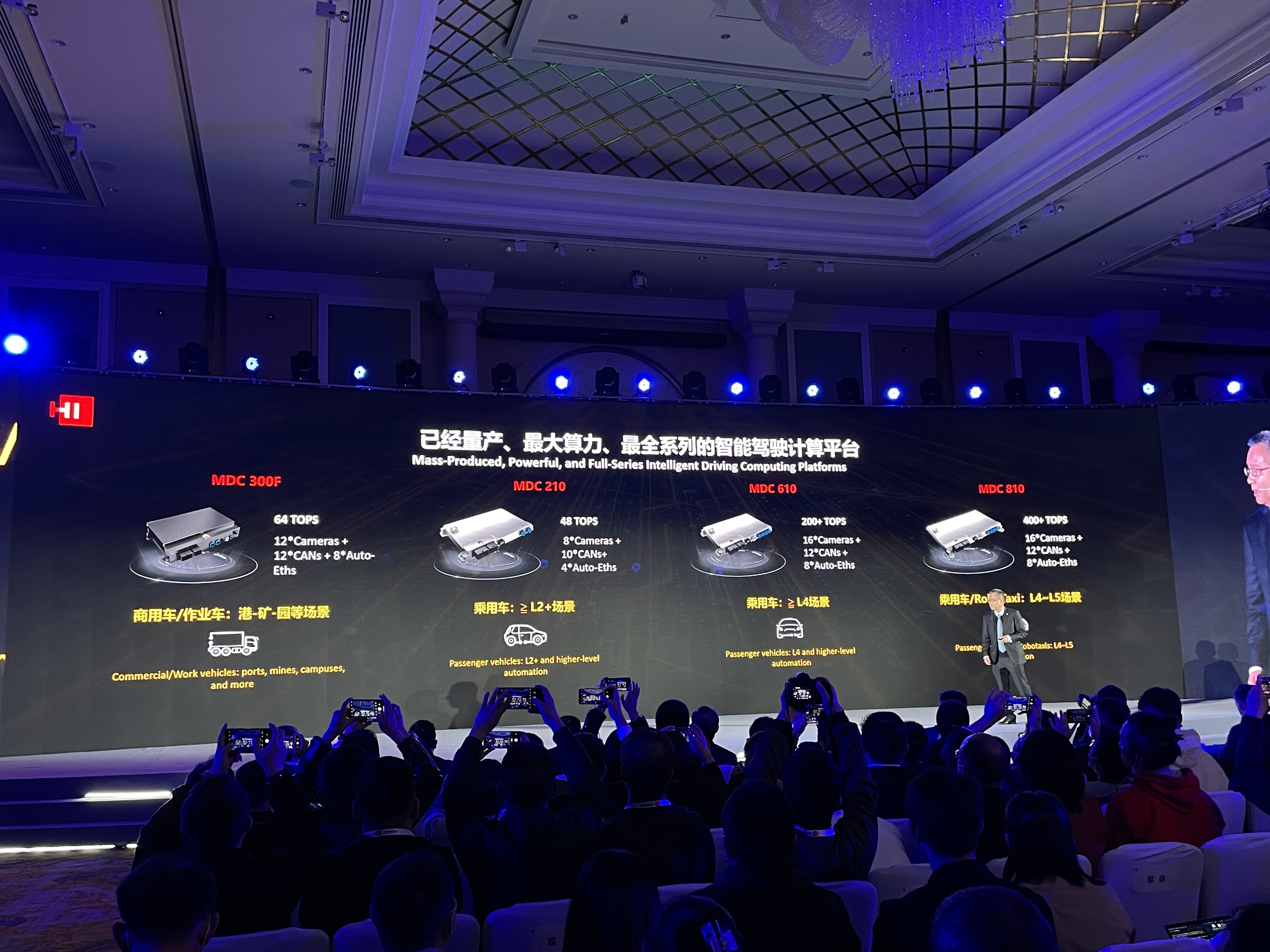 Based on these information, Huawei ADS can achieve L2 level assisted driving for high-speed closed highways and urban open roads. Although the term “autonomous driving” was used in the promotion, Huawei ADS solution, built on the MDC 810 computing platform, is still defined as L2 level assisted driving by Huawei officials. In a previous interview, Su Jing, the chief architect of the Huawei ADS product line, stated that this solution is L2 and welcomes the media to refer to it as “autonomous driving assistance”, as the driver is still responsible for driving behavior. To truly enable passenger cars with Robotaxi capabilities, it will still take another 10 years.
Based on these information, Huawei ADS can achieve L2 level assisted driving for high-speed closed highways and urban open roads. Although the term “autonomous driving” was used in the promotion, Huawei ADS solution, built on the MDC 810 computing platform, is still defined as L2 level assisted driving by Huawei officials. In a previous interview, Su Jing, the chief architect of the Huawei ADS product line, stated that this solution is L2 and welcomes the media to refer to it as “autonomous driving assistance”, as the driver is still responsible for driving behavior. To truly enable passenger cars with Robotaxi capabilities, it will still take another 10 years.
In fact, Huawei does not advocate for autonomous driving classification from L1 to L5. “The autonomous driving industry should decouple function and regulation and achieve an experience of L4 under the legal responsibility of L2.” Su Jing, the chief architect of Huawei ADS product line, explained why Huawei ADS is L2 assisted driving in the interview. Interestingly, Huawei does not agree with L3 autonomous driving. Su Jing shared a story that a domestic manufacturer approached Huawei for cooperation, hoping to develop a set of ODD very small L3 autonomous driving “for example, high-speed highway scenes with high-precision map coverage and clear lane lines to achieve automatic driving under 30km/h congested scenes”. Huawei refused this cooperation, as for Huawei, it is feasible but unnecessary to make autonomous driving for the sake of autonomous driving. The specific user experience of the function is the core research and development point of Huawei ADS.
Based on the MDC 810 computing platform, what assisted driving functions can ADS achieve? ADS is divided into three functional levels: NCA, ICA Plus, and ICA. These three levels will be determined according to the scene and will be degraded and upgraded according to the scene, similar to XPeng’s NGP, LCC, ACC.
The highest level NCA requires driving in an area with pre-prepared high-precision maps and can achieve full automatic driving assistance from point to point. Huawei already has Class A mapping qualifications, and the fleet has completed the collection of high-precision maps for city open roads in Beijing-Tianjin-Hebei, Guangdong-Hong Kong-Macao Greater Bay Area and other four first-tier cities, as well as high-speed and urban expressways nationwide, with quarterly updates. Currently, Huawei plans to expand the city road collection to more than 8 cities in 2022 and more than 20 cities in 2023. This progress is still very fast, but China’s territory is vast. With nearly 300 prefecture-level cities and countless county seats, it is impossible to complete the collection of high-precision maps of all roads in the country with a single force. Therefore, Huawei is also actively constructing multiple map business alliances, hoping to establish unified standards, share data collected by different map businesses, and accelerate the collection of roads across the country.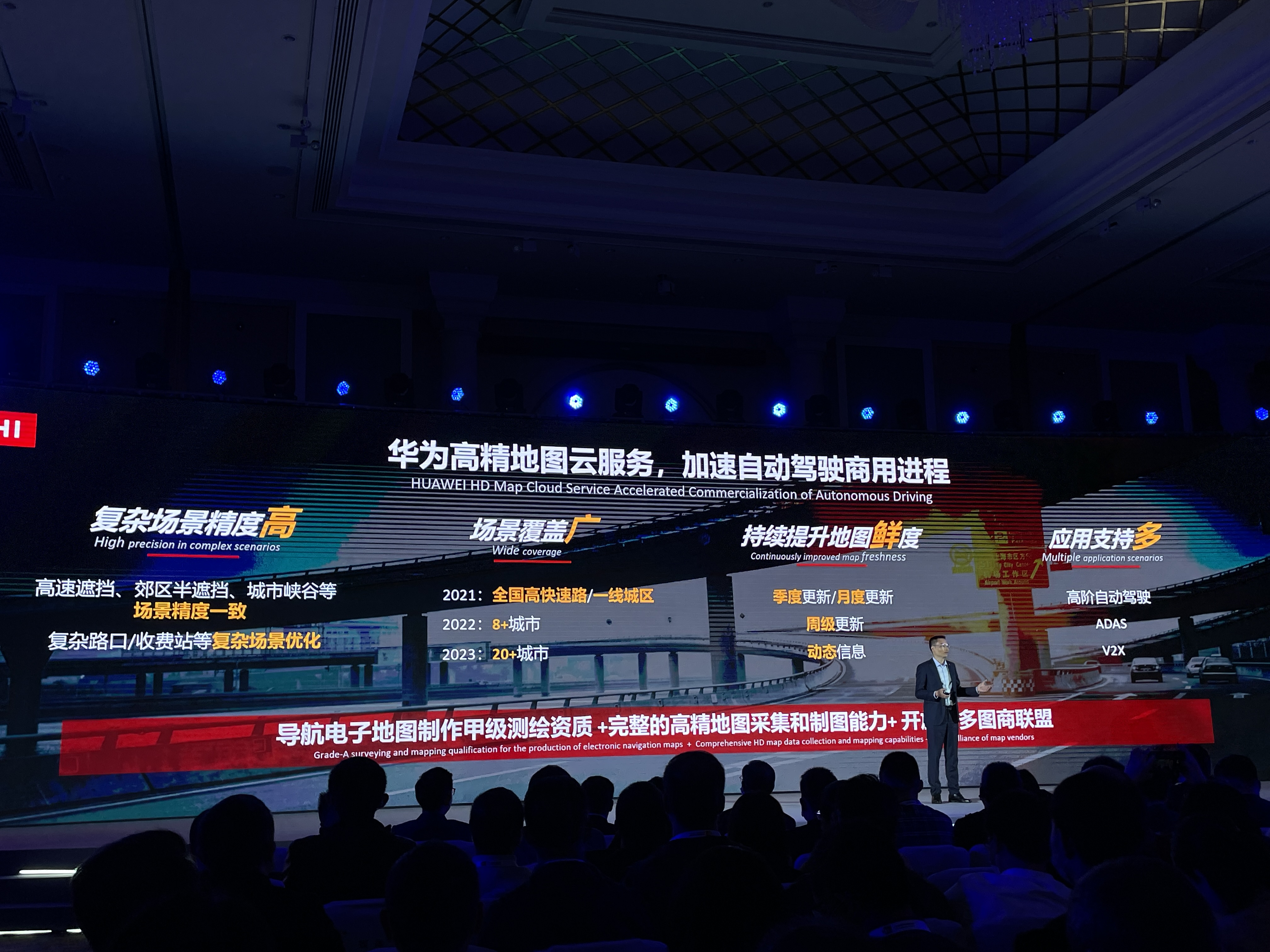
With prior information from high-precision maps, combined with centimeter-level absolute positioning from RTK signals and relative positioning from LiDAR-based SLAM, the soul-searching questions of self-driving, “Where am I?” “Where do I want to go?” and “How do I get there?” can be answered. Through manual or automatic labeling, vehicles can clearly identify the exact location of traffic lights on the road, obtain and recognize red and green signal information through visual neural networks, and extract and segment lane and pedestrian crossing lines, as well as traffic signs through visual recognition, thereby allowing the vehicle to understand the rules of human traffic scenes. Of course, the most difficult aspect is environment perception as well as planning and control tailored to different scenarios. Once these abilities are combined, the vehicle can safely achieve point-to-point self-driving. Currently, Huawei’s ADS responsibilities still lie with the driver. Even if the vehicle has achieved full-scenario point-to-point self-driving, the system cannot guarantee the proper handling of traffic environments 100% of the time, and the driver still needs to be ready to take over and observe the road.
Does this mean that assisted driving can only be achieved with high-precision map collection in open urban roads? Not necessarily! ICA Plus operates in a similar manner to crowdsourcing high-precision maps. Any vehicle equipped with Huawei’s HI LiDAR, as long as it hits the road, can create real-time maps. The information collected by the LiDAR and cameras on the vehicle as it travels is mapped and stored. The more times the same road is traveled, the more complete and closer to the physical world the information becomes. Vehicle owners can also choose to connect to the Date Club and share the data collected by their vehicle with other Huawei-equipped LiDAR vehicles in the city. Once the high-precision map is completed, the system can achieve the same functionality as NCA, achieving point-to-point self-driving assistance in areas covered by high-precision maps.
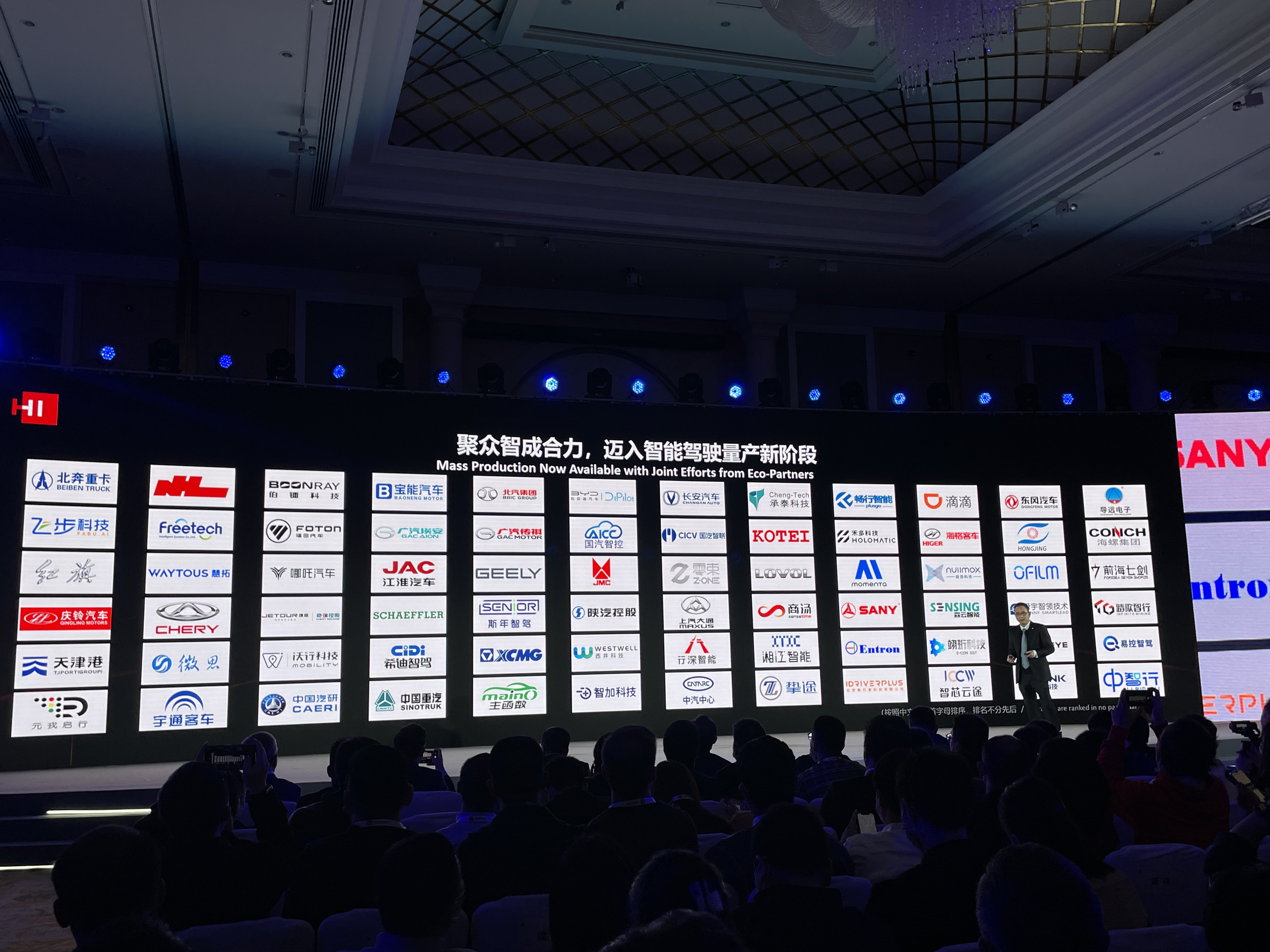
ICA Plus is like ICA that has gone from quantitative to qualitative, meaning that if a road in a city has no officially collected high-precision map or has never been traveled before, it is similar to the familiar assisted driving of Tesla AP, where it can only travel along the lane line but cannot plan the route according to navigation.
It can be seen that the convenience of ADS is quite strong and will be better experienced in first-tier cities. If it is popularized in other cities, the requirement for the number of vehicles in that city will be high. If there are too few vehicles, the progress of crowdsourcing high-precision maps will be slow. However, for high-frequency repetitive driving routes such as commuting, NCA can be achieved.
Smart Cockpit Built on HarmonyOS# Huawei Intelligent Cabin Solution
Huawei has announced its intelligent cabin solution, which includes the HarmonyOS operating system, hardware, and ecosystem. The HarmonyOS operating system is the core of the solution, which can connect smartphones, PCs, smart wearables, and other smart terminals to achieve seamless continuity. For example, when navigating to a destination on a smartphone and getting into a car, the navigation information will automatically transfer to the car system. Upon arriving at the destination and exiting the car, the same information will transfer back to the phone, all without any extra effort.
In addition to the seamless continuity, an adaptive operating system that fits car consoles, smartphones, and smart terminals can integrate data from different smart terminals to enable many functions, such as personalized login and logout for the driver’s personalized car system account on the phone. Additionally, the car console can also access health information from smartwatches, such as heart rate data, and sync schedules with other smart devices. By connecting car consoles and smartphones, this operating system has the potential to enable smart features and improve driving experiences.
Regarding hardware, Huawei’s solution boasts a 15.6 inch 2K resolution PAD as the central control display screen, which is significantly better than most screens on the market for cars. Huawei’s NFC touch-and-connect feature also provides quick and easy access to data and connections between devices. Furthermore, in addition to the large screen and AR-HUD, Huawei also offers a millimeter-wave radar solution that can implement gesture interactions and be applied to in-cabin life detection.
Huawei’s AR-HUD, known as the “first screen” of the intelligent car, has a large viewing angle of 13° * 5°, equivalent to a 70-inch display screen 7.5 meters in front of the driver. Achieving a projection distance of 7.5 meters for an AR-HUD is not an easy feat, but it provides a larger display area and a better match with the road environment, making it more realistic for drivers to see navigation information. This device can also produce brightness of up to 12000 nits, ensuring clear visibility day or night. The high resolution display of 1920 * 640 also allows for more diverse and vibrant information displays, making it unnecessary to check the instrument panel.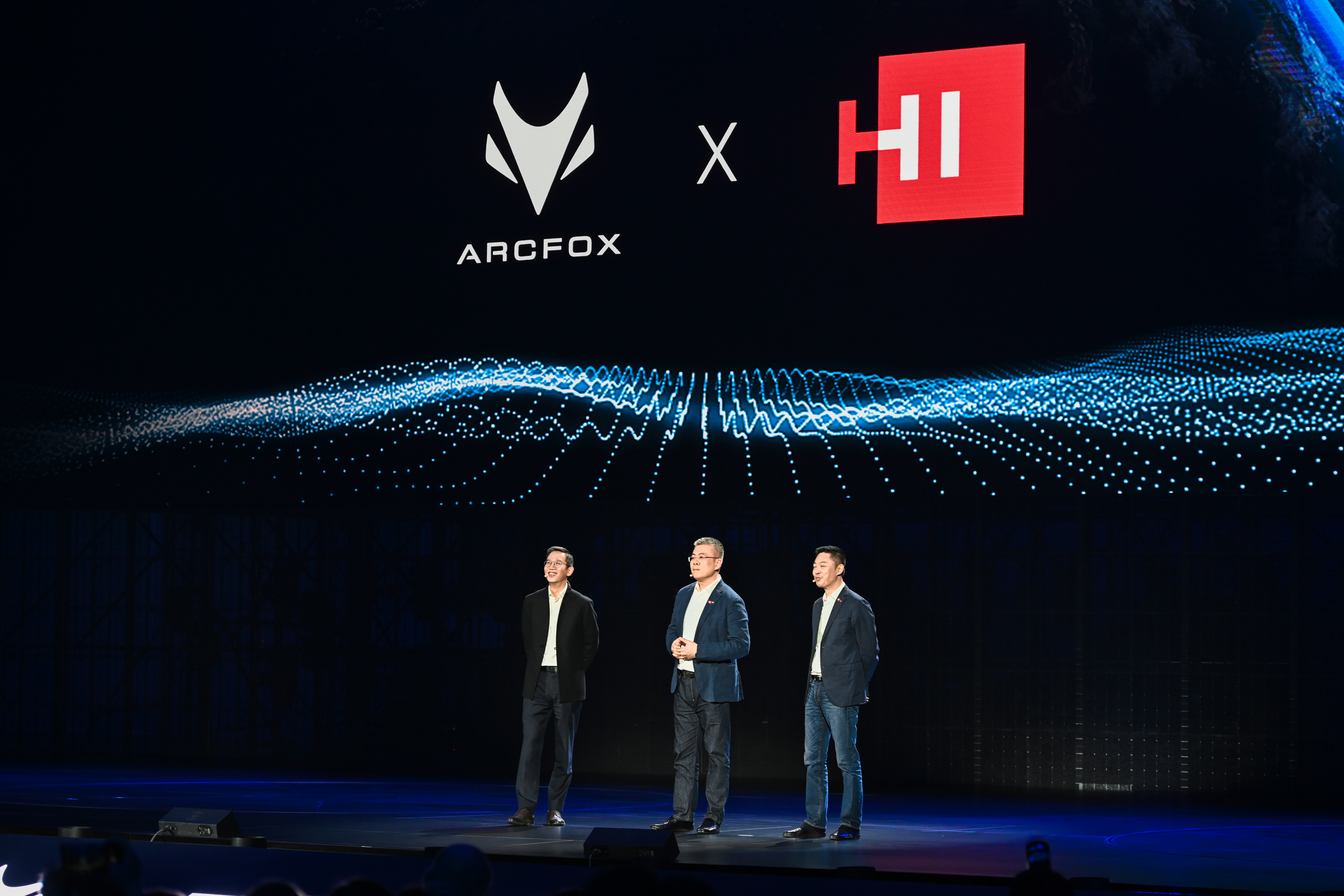
Under the cooperation model of Huawei Inside, Huawei has opened up a new partnership path. Taking the example of the Alpha S Huawei HI version co-developed with JiHu, Huawei will shoulder the continuous iterative optimization of the in-car system and ADS autonomous driving assistance for car owners throughout the entire life cycle of the car, and push new features and continuously optimized experiences to users through OTA updates.
For the sales revenue of the autonomous driving and intelligent cockpit parts, as well as the fees paid by users under the subscription model, Huawei will share with its partners. This is a novel approach and currently a more reasonable one. For the automakers, building cloud capabilities and OTA capabilities, and continuously developing software iterative optimization are laborious and not necessarily feasible tasks. However, these are Huawei’s strengths. By reasonably dividing the work and achieving maximum common interests, this is also where Huawei Inside’s value lies.
Of course, the Huawei Inside model also poses risks for car companies. Just as human nature is selfish in the face of resources, organizations also tend to be exclusive in the face of data. For automakers, choosing HI means deep binding with Huawei, and this deep binding is exclusive.
In terms of data ownership, the host automakers are also in a weak position. As Su Qing, the Chief Architect of Huawei ADS, said, “The information collected by sensors can only be considered as raw materials. These raw materials can belong to the automakers, and the data processed by Huawei’s algorithms can be called data. The algorithms are Huawei’s intellectual property, so the data naturally belongs to Huawei.”
In this way, automakers really become “peripheral manufacturers”.
This article is a translation by ChatGPT of a Chinese report from 42HOW. If you have any questions about it, please email bd@42how.com.
